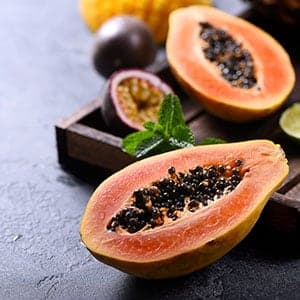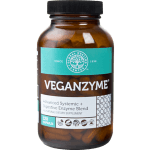Papain is a powerful digestive enzyme commonly found and extracted not only from the papaya fruit (Carica papaya) latex but also from papaya leaves and stems. It is also referred to as papaya proteinase. The papaya enzyme papain plays a key role in digestive processes involving breaking down tough protein fibers. For this reason, it has been commonly used in its native South America for digestive support when eating meat and even to tenderize meat before cooking. (more…)







